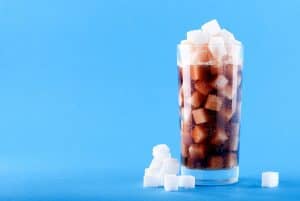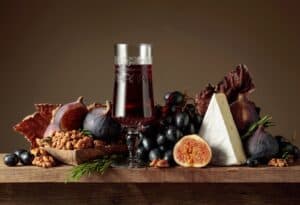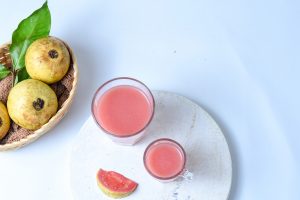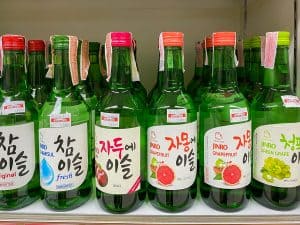
We know Cabernet Sauvignon for its dryness and high tannin content, but that doesn’t mean it’s a ‘bad’ wine. These red grapes are known for their durability and thick skin, which adds tannins to the taste profile.
Cabernet Sauvignon vines were actually a fortunate mistake when Cabernet Franc and Sauvignon Blanc grapes were crossed, resulting in an easy-to-grow, resistant to the elements and most vineyard diseases.
Cabernet Sauvignon leaves a dry feeling in the mouth, which is best paired with food and drank during a meal. The best options for this robust wine are red meat such as steaks, ribs, venison, game dishes, and rich stews. Meat-free options include strong and aged cheeses. Olives and mushrooms provide an earthy flavor and will satisfy vegetarian and vegan palates.
First, we’ll focus on how to drink Cabernet Sauvignon and offer tips on serving and food pairings. In the last part, we’ll look at the happy accident that resulted in the Cabernet Sauvignon vines before diving into the taste characteristics of Cabernet Sauvignon.
How To Drink Cabernet Sauvignon
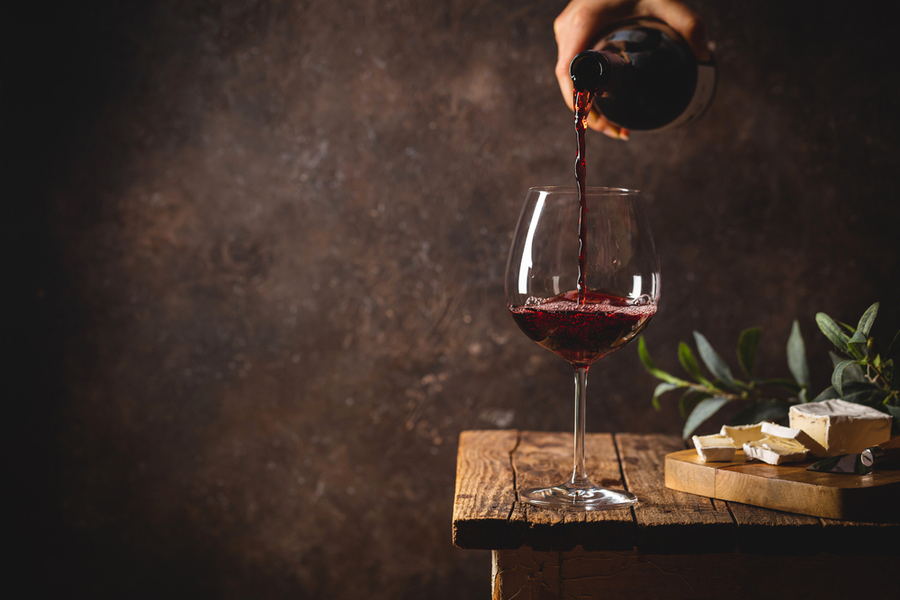
Should you decant the wine? Absolutely!
Cabernet Sauvignon benefits significantly from decanting and should be allowed to breathe between 30 and 60 minutes. The oxygen will soften the intense, bold flavors of the wine, making it more enjoyable to drink.
Being a red wine, the serving temperature is between 16°C and 20°C (60–68°F), or room temperature. Do not chill the wine beforehand; do not put it in an ice bucket.
Always serve Cabernet Sauvignon in red wine glasses—do not shill the glasses beforehand. Hold the glass by the stem to avoid warming the wine and dulling the tastes and aromas.
Food Pairings
We’ve established that Cabernet Sauvignon should be paired with red meat.
Cabernet Sauvignon pairs well with strong flavors because it will overwhelm delicately flavored foods.
Strong cheeses include Roquefort, extra matured gouda or cheddar, aged Gruyère, and Pecorino. Cheshire, Parmigiano Reggiano—the list goes on. Strong-flavored, hard cheeses are usually the best pairing.
You can also consider Stilton and Parmesan as additions to your charcuterie board (some excellent pointers here!).
Go for smoked and fatty meats such as salami, bresaola, or roast beef slices. A charcuterie board is a perfect opportunity to experiment in a relaxed setting with friends or family; consider making notes on what works and what pales so that you all know for future reference.
Avoid serving Cabernet Sauvignon with pasta and rice because the starches do nothing to temper and mellow the wine’s tannins. The cheeses listed above and fatty red meats contain proteins and fats that bind to the tannins and aid in bringing out the flavor.
For a meat-free option, try this recipe, and remember olives, mushrooms, and intense umami flavors such as miso play nicely with this full-bodied red wine. This wine is also an excellent choice for sauces and reductions.
How Were Cabernet Sauvignon Vines Created?
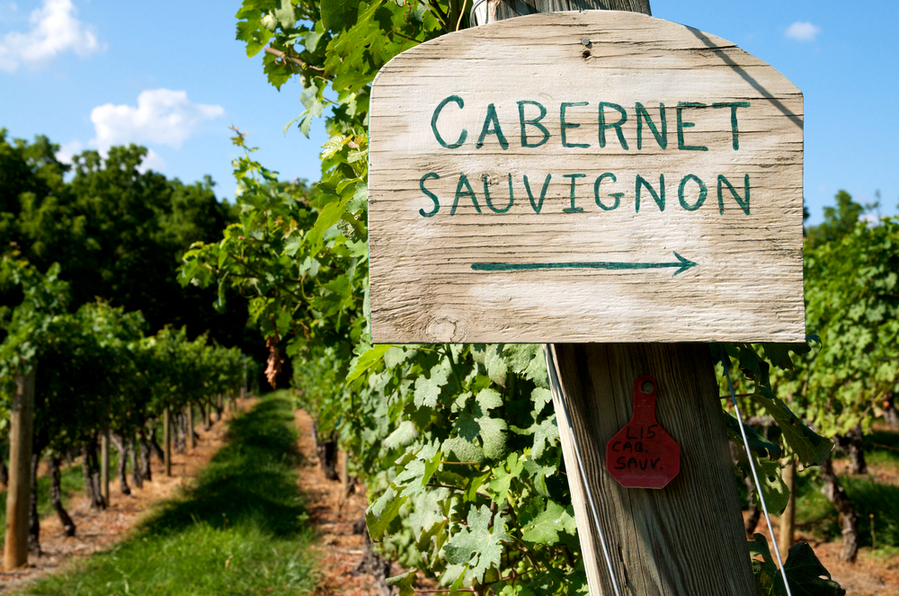
Cabernet Sauvignon grapes are a cross between Cabernet Franc and Sauvignon Blanc. Cabernet Sauvignon hails from the Bordeaux winemaking region but can now be found as far north as Washington State and even as far south as the Yarra Valley in Australia and everywhere in between.
More accurately, a chance crossing happened in the seventeenth century (here, you can read about crossing grape varieties).
Growers noted the grapevines are easy to grow and reasonably consistent in their characteristics. Consistency is vital when you produce wines, and Cabernet Sauvignon enables winemakers to do this.
Another bonus is that the vines are relatively resistant to vine pests and diseases—powdery mildew is, unfortunately, the most noted exception. Two other vine diseases it cannot stand up against are Eutypella scoparia and excoriose.
Taste Characteristics of Cabernet Sauvignon Wine
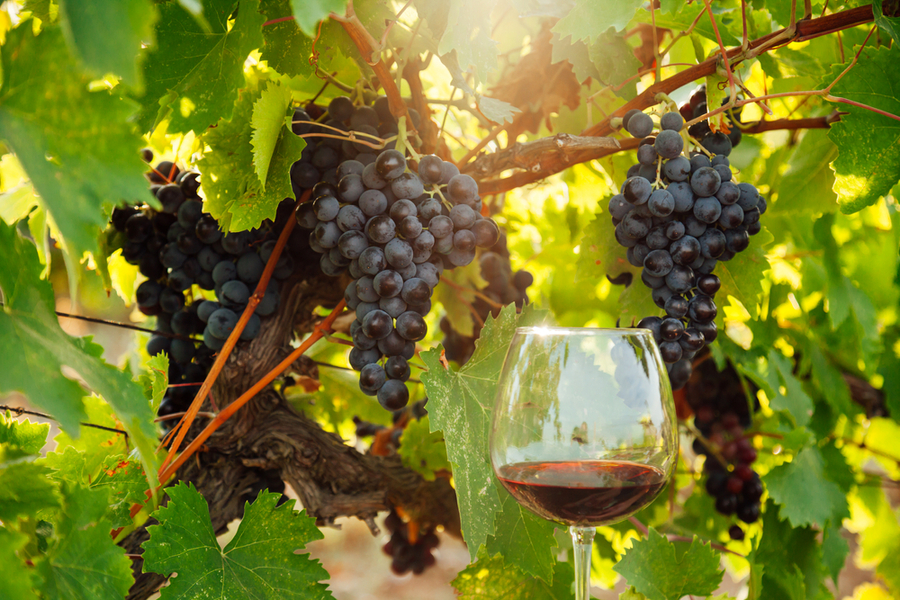
Usually, the soil plays an essential role in the winemaking process, but with Cabernet Sauvignon, less so. Temperature is slightly more meaningful because this will influence the taste of the wine.
Cabernet Sauvignon reacts better to the rocky, gravel-packed soils of the Left Bank and its deep deposits of limestone. Poor soil doesn’t mean lousy wine—the more a vine has to ‘struggle’ for nutrients, the more character and potential quality it develops. Coniferous forest land, which tempers the maritime climate of the sea, also borders the Left Bank.
Cabernet Sauvignon can grow in various climates because of its robust growth and adaptability to its environment. Before we can dive into the temperature influences, let’s look at harvesting times.
The grape is one of the last major grape varieties to ripen and typically buds and matures one to two weeks after Cabernet Franc and Merlot. This means the temperature during the growing season influences how early they can harvest the grapes for optimal taste.
Cabernet Sauvignon is also a varietal grape, meaning it is a wine made from the named variety or the major component in a blended wine. Let’s look at the taste characteristics in more detail below.
A grape variety is a specific sort of grape. It is written in lowercase (cabernet sauvignon). The wine is known as a varietal if just one variety appears on the bottle label. It is named for the grape with uppercase initials (Cabernet Sauvignon, Merlot, etc.). A varietal wine highlights the fruit: the grape type drives the wine flavor.
Overall Taste Notes
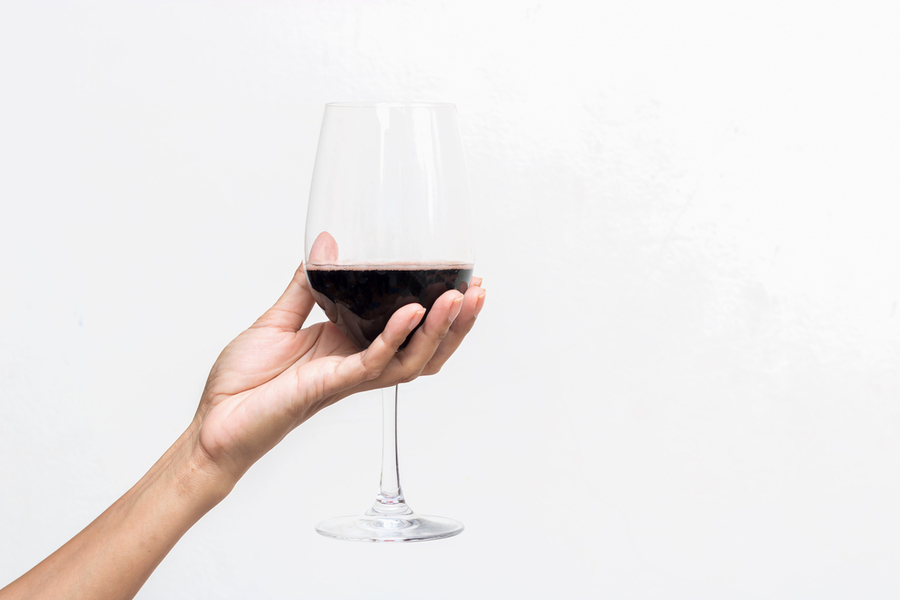
Cabernet Sauvignon, or cab sav, is known as one of the driest red wines because they remove all sugars through fermentation. Aging the wine in oak barrels also adds to the dryness.
We usually pair it with food and rarely drink it on its own because of its overpowering taste. The alcohol content is also relatively high, ranging between 13.5% and 15% ABV, and can be overpowering without a food pairing.
The high level of tannins is an excellent accompaniment to fatty foods such as lamb chops. It is often paired with red meat, such as cheeseburgers, prime rib, and steaks.
Look out for flavors such as tobacco, vanilla (because of the oak barrels), and acidic fruits such as blackberries. You can expect green bell pepper tastes if the wine comes from a cool climate.
Cooler Climates
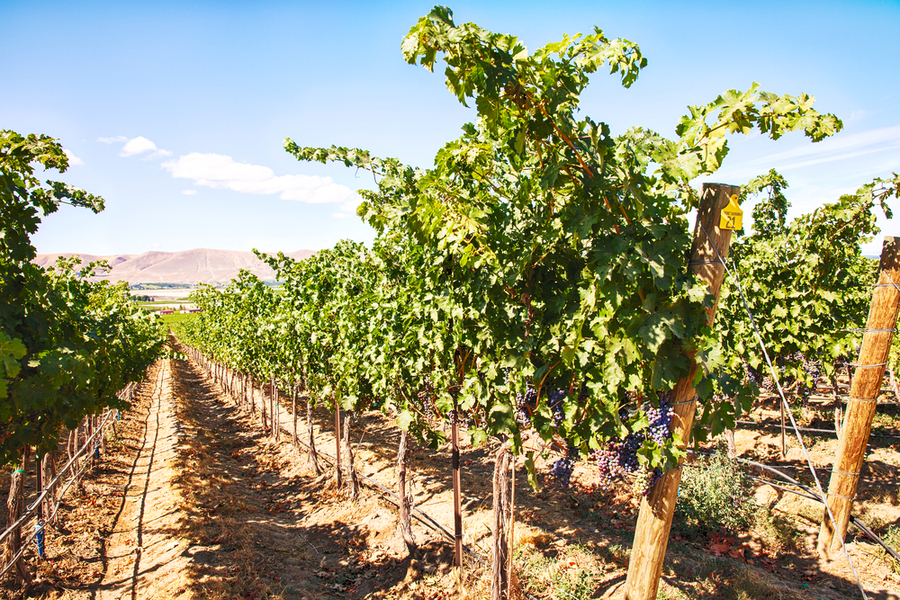
In Australia, the Coonawarra region produces primarily red wines, with Cabernet Sauvignon and Merlot being the blending partner. The growing season is between October and April because it is in the southern hemisphere.
The temperature is temperate and ranges between 13ºC and 19.3ºC (55—67ºF), with January being the hottest month. Cold winters and cool summer nights with consistent cloud cover reduce the temperature meaning the region has a temperate or Continental climate—not too dissimilar to Bordeaux.
The cooler temperature results in pronounced plum and blackberry tastes. Coonawarra is also home to Australia’s most famous soil, terra rossa.
A green bell pepper taste is one of the most noticeable elements of Cabernet Sauvignon grapes grown in cooler regions—this is not a wine fault. Still, it may not be acceptable to some consumers.
Winemakers in cooler regions can sometimes struggle to ripen their grapes fully, leading to pyrazines’ presence. In warmer climates, the pyrazines are destroyed by the sunlight as the grapes ripen.
Still, in regions such as Monterey in California, the windiness can cause the grapes to stop ripening, thus retaining the green bell pepper taste.
Warmer Climates
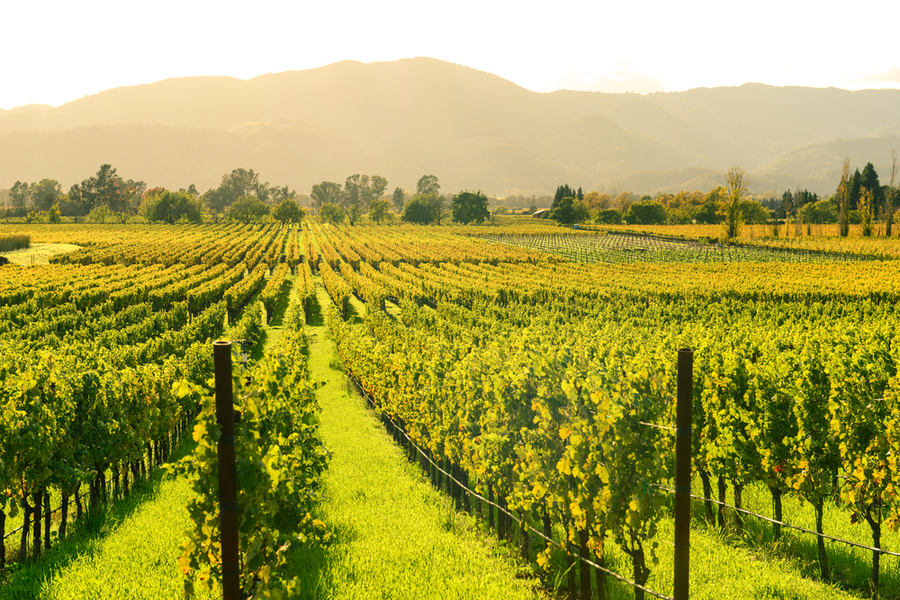
California has abundant sunshine, allowing the grapes to ripen thoroughly without many problems. California’s temperature also allows winemakers to produce varietal wines. In the Napa Valley winemaking region of California, especially Oakville and Rutherford, the soil or terroir plays a role in the wine’s taste.
Cabernet Sauvignon wines from Rutherford are often quoted to have a ‘Rutherford dust‘ taste because of their gravelly, sandy, and loamy soils combined with Franciscan marine sediment materials with some volcanic deposits also present.
The temperature also plays a role in ripening the grapes—warm summer days lead to cool evenings, and this fluctuation allows the grapes to ripen at a steady pace.
The gravelly soils offer the additional benefit of being well-drained and radiate heat to the vines helping the grapes to ripen.
Conclusion
Because Cabernet Sauvignon is high in tannins and bold-tasting, it is best not to serve it as a ‘drinking’ wine during a social gathering. Your guests will feel thirsty, and nobody likes feeling like they’ve walked through the Sahara for days.
Cabernet Sauvignon is best served with food—you can get creative and have a social gathering around a charcuterie board. Alternatively, it can be served at an informal or formal dinner party and paired with red meat such as lamb chops, steak, or ribs or meat-free options such as olives and miso.
Remember, Cabernet Sauvignon has a bold taste and will overwhelm delicately flavored dishes.


